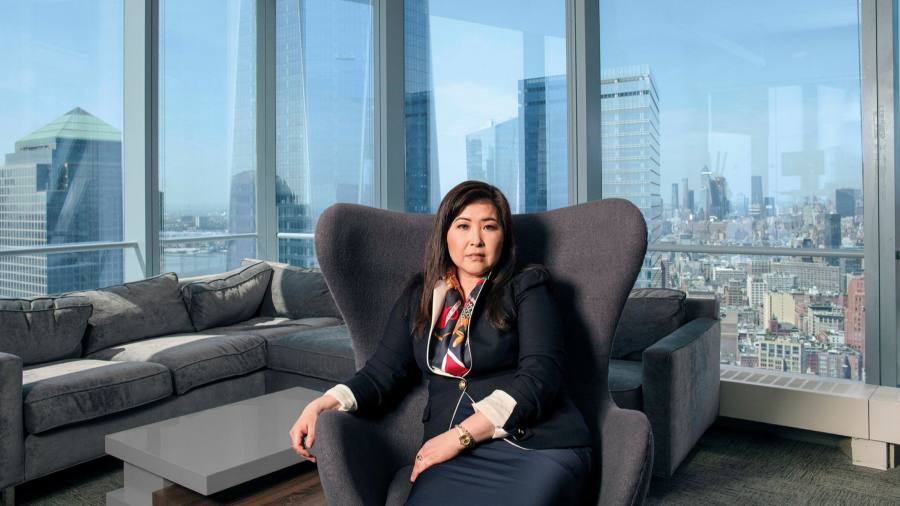“Bitcoin was only really known in geeky tech circles and eventually currency traders in London found out about it around 2010,” says Ro.
With a background in markets at global banks such as Deutsche Bank and Morgan Stanley, Ro was quick to grasp blockchain’s revolutionary potential.
Ultra-high-net-worth individuals such as Paul Tudor or Stanley Druckenmiller were among the earliest backers of bitcoin, the biggest cryptocurrency, and are prominent in the market today.
Billionaire investors openly discuss their cryptocurrency-related investments, while some large publicly listed companies, such as software company MicroStrategy, hold billions of dollars’ worth of bitcoin on their balance sheets.
Neither the sharp sell-off that hit cryptocurrencies last month nor the surrounding turmoil should obscure the fact that these are now huge markets, with a combined value of $1.6tn.
“We have seen UHNW individuals and family offices looking into cryptocurrencies and becoming interested in allocating some portion of their investments into crypto,” says Calvin Koo, a Hong Kong-based lawyer at Kobre & Kim.
Ro is reluctant to say how much she is worth as a result of her bitcoin punt, as she has been targeted by scammers and has received death threats after talking about the subject.
“Getting in early because the tech seemed really cool also worked out as an investment, so that’s also pretty cool.” Being an early investor meant she has had to try a dozen exchanges, suffered hacks and been locked out of investments.
“I wasn’t surprised by bitcoin doing well, but there were always a lot of risks.
In 2014, when bitcoin was trading at around €600, he became the first person to pay for a flight by private jet with the cryptocurrency.
More recently, the huge gain in the price has left early investors like Janssens dealing with the problem of having too much bitcoin as a proportion of their overall portfolio.
More than one in 10 flights were settled with bitcoin in January at jet-hire company PrivateFly, where the share of cryptocurrency revenues grew to a fifth of the total.
However, Janssens is slightly disappointed in bitcoin’s evolution from a peer-to-peer means of payment to a perceived store of value, which he says is “completely against the original aim” of the cryptocurrency.
Like bitcoin, all are created by computers solving complex mathematical equations, churning out digital code.
Janssens is among wealthy investors who think ethereum, launched in 2015 and now the second-most traded cryptocurrency, could be bigger than its erstwhile peer.
While bitcoin is just a piece of digital code, ethereum acts as a store of data and a marketplace for assets as well.
Ethereum is also behind most non-fungible tokens, which are digital representations of things, people or concepts that investors can buy in the form of units of data stored on a secure computer ledger — artworks, for example.
“Our clients have already created substantial wealth, so they’re in preservation mode and only a very small proportion of clients have the high risk tolerance required for crypto,” says Mohammed Kamal Syed, head of asset management at Coutts, the UK bank.
But with crypto, if anything, they’re bewildered; they don’t understand why it’s gone up or down — because no one knows,” he says.
“I believe we have passed the point of peak speculation — crypto and bitcoin have this glamorous image, but that will get questioned ultimately,” says Barry Norris, chief executive and fund manager at Argonaut Capital, a London-based equity specialist.
Criminal investigators say cryptocurrencies can be used for financing terrorism or other illegal activities, while tax inspectors are focusing on investors’ huge capital gains.
“You can’t find alpha like this in any other asset class,” says Kevin Kang, founding principal of New York-based cryptocurrency hedge fund BKCoin, whose clients include rich individuals.
Now chief executive of US venture company Free Fenix, he says he is “an investor first and foremost, who also happened to play sports in the past”.
“Bitcoin might drop 20 per cent in a day, but year to date it’s still up 85 per cent; it’s about how far out you see the big picture,” he adds.
I believe in crypto in the long run, but I’m not going to put all my life savings in it.
